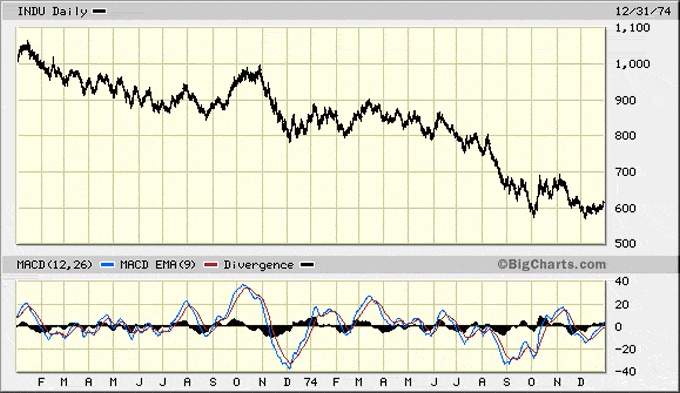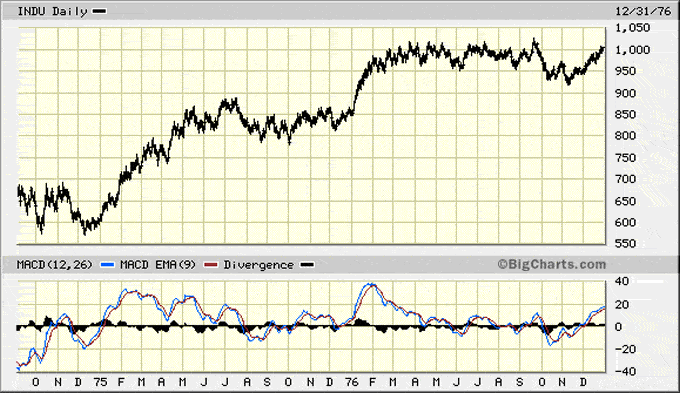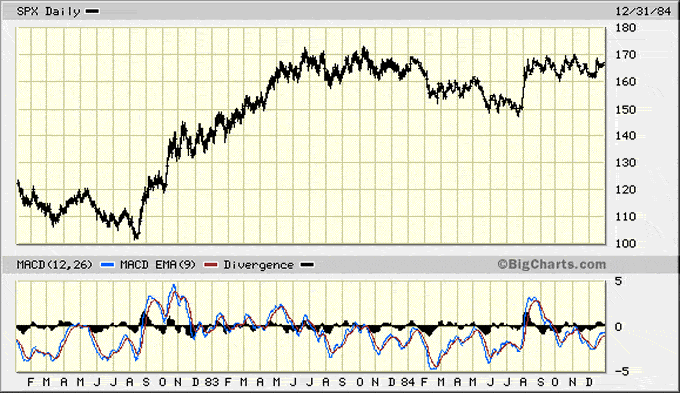What Stock Market Crash History Tells Us To Expect For 2010
Stock-Markets / Stock Markets 2010 Jan 16, 2010 - 01:10 PM GMTBy: Clif_Droke

 Many have wondered why the 10-year cycle peak in late September/early October didn’t produce a more meaningful correction in the broad market. Instead, the 10-year cycle peak produced only a marginal six percent pullback in the S&P 500 Index (SPX) instead of the much deeper one usually associated with the 10-year peak.
Many have wondered why the 10-year cycle peak in late September/early October didn’t produce a more meaningful correction in the broad market. Instead, the 10-year cycle peak produced only a marginal six percent pullback in the S&P 500 Index (SPX) instead of the much deeper one usually associated with the 10-year peak.
A look at the past reveals why: the first full year following a crash low has never produced a sizable correction in the stock market. That historical truism certainly proved itself out in 2009. But what of the second year after a crash? What can we expect in the coming year based on market history? We’ll be taking up this question in the commentary that follows.
The two most persistent traits that investors displayed in 2009 were either the avoidance of the stock market altogether by remaining in the safety of cash or else to look for opportunities to sell short each time the market took so much as a breather. Both of these tendencies were direct consequences of the historic credit crisis of 2008. It has long been observed that retail investors typically shy away from equities for at least the first two years following a major bear market or stock market crash. The painful memories take time to heal and leave deep and abiding scars.
Even for those stalwarts who stay the course and continue trading and investing, a market crash creates a tendency toward conservatism. Traders tighten up protective stops on all their trades, avoid over-trading, refuse to buy large positions in any one stock and make a serious effort at avoiding the mistakes that were made during the heady days of the forgiving bull market. Indeed, the reversion to conservatism and self-examination among market participants is one of the redeeming qualities of a market crash. Bear markets are purgative in that they cleanse the system of lavish excesses and restore a sense of propriety to the market by and large.
For those investors who respond to the destruction wrought by a crash by refusing to participate, the resulting effect is equally beneficial to the overall soundness of the market. These non-participants, who comprise the great majority of all potential retail investors, will spend the next year building cash reserves and restoring their personal balance sheets. While this won’t necessarily be of any benefit to the stock market, nor to those who make their living in the brokerage or advisory business, it will act as a reserve – or liquidity bank if you will – for the future. For at some point the market will need this liquidity and by the time those reserves are needed, the painful memories of the previous bear market will have dissolved from the public’s collective memory. As their confidence grows they will become more enticed by the lure of the potential returns of stocks vis-à-vis the low-yielding safety of the bond market.
Returning to our original observation concerning market behavior in the 1-2 years following a crash, let’s examine some chart examples of the past few bear markets. Perhaps the single best example and the one that most closely correlates to our time is the crash of 1973-74. This particular bear market was a function of the Kress 40-year cycle, which bottomed in October 1974. It produced a painful and persistent decline in the S&P 500 for the better part of two years, as well as an economic recession. At the time this happened it was the worst bear market stocks had suffered since the Great Depression. By the time it ended the SPX had lost some 45% of its value. As you can well imagine (and some of you may actually remember it), the feeling at the bottom in October ‘74 was one of unmitigated doom and gloom – a feeling that persisted in the public’s mind well beyond 1974.

The market was anything but forlorn in the two years following this bear market. In the year 1975 the stock market rallied vigorously and with relatively mild corrections along the way. The Dow Jones Industrial Average (DJIA) rallied 100 percent in ’75, a record performance following a bear market and one that stands to this day. The market continued its recovery into 1976, and although its ’76 performance wasn’t anywhere near as stellar as the one in ’75 it remains immune to major corrections and kept the recovery going for two full years following the bear market low in 1974.

Of course the market cycles which comprised the 1973-74 bear market were considerably different than the cycles underlying the 2007-08 bear market. Yet the market dynamics between the two eras are so remarkably similar that the inference can still be drawn that ours is a situation analogous to the 1975-76 recovery.
Notice in the above chart of the Dow that the 1976 follow-up to the explosive 1975 rally was much more volatile and less dynamic, yet it was still a positive year overall for the Dow. The possibility exists that 2010 could end up being a positive year overall in spite of the 4-year cycle bottoming later this year. The inference that can definitely be made is that the coming year will almost certainly show more bumpiness than 2009 and less dynamic market action.
If 1976 holds any clues for how 2010 will play out then we can expect more range-bound behavior from the major indices. This means stock selection will become more important as the sectors showing only the best relative strength, forward momentum and earnings growth should be favored over weaker sectors. The coming year is likely to reward good stock selection as opposed to the “buy with both hands” strategy that played out so well in 2009. Market timing will also be more critical in 2010 as opposed to last year since there are two major cycle bottoms scheduled this year: one in the first quarter of the year and one around late September/early October (namely the 4-year cycle).
The next example in our survey of bear markets is the bear market of 1981-82. From the depths of this bear was spawned an apocalyptic sentiment made infamous by several high-profile movies with Armageddon type themes in the early ‘80s. While the ’81-’82 bear market wasn’t as severe as the previous one of ’73-74, it was strong enough to exert a profound influence on investor psychology and left the retail investment crowd with a revulsion toward equities for the next 2-3 years. It also launched the powerful ‘80s bull market, which didn’t meet its apogee until the end of the decade.
Let’s turn our attention specifically to the 1-2 years following the ’81-’82 bear market. As you can see in the following chart example, the first full year following the bear market low saw no major correction in the SPX. Even 1984, which saw considerably more volatility than ’83 due to the bottoming 10-year and 30-year cycles, wasn’t as bad a year as it probably should have been.

This is significant for several reasons. Consider that 1984 by all indications should have been a bearish year, yet it wasn’t that bad for stocks in the overall scheme in spite of the fact that a major long-term Kress cycle was bottoming. The reason for this was because the public was still scared to the point of non-participation and the lingering abhorrence to equities following the bear market from two years prior was still a major factor. This can’t be is emphasized enough. As ephemeral as crowd psychology can be, when the retail investor is paralyzed with fear and revulsion toward stocks, the market enjoys a strong support regardless of the cycles that may be leaning against stocks as long as tight money conditions aren’t prevalent. At extremes, negative crowd psychology is strong enough to contend even with the cyclical forces of the stock market up to a point, and assuming money isn’t inordinately tight.
The next bear market in our survey was one of the shortest in history. I’m referring of course to the stock market crash of October 1987. Its after-effects in the public mind were profound to say the least. The SPX launched a recovery rally early in 1988 and continued its recovery into 1989 with nary a correction along the way. The ’88-’89 period is an example of a 2-year period following a bear market with nothing bigger than an eight percent correction along the way.
Next we come to the bear market of 1990. The year 1990 was a painful one for stock market investors as it heralded a bear market and a serious crisis for savings and loan institutions. The year 1990 was the single worst year of the S&L crisis and saw the failure of more than 100 small banks. The SPX declined sharply between July and October, when the 24-year cycle bottomed. Following this important cycle bottom, the stock market regrouped and began a new bull market that lasted until the 30-year cycle peaked in late 1999. For our purposes we will only observe that the two years following the October ’90 bottom saw the SPX launch a recovery that saw only mild periodic corrections along the way.
Next we come to the summer 1998 market crash and mini bear market. According to history we should have seen a 2-year recovery off the September ’98 low. Instead, the turn of the century witnessed the commencement of the 2000-2002 “Tech Wreck” which saw the NASDAQ bubble burst. Internet stocks were particularly hard hit in the 2000-2002 period. The more conservative Dow 30 Industrial stocks fared considerably better than the tech stocks in 2000, which was the second year of the post-’98 crash period, however. The year 2000 proved to be more or less a lateral trading range in the Dow, which prepared the way for the next crash that was to follow in 2001-2002. The year 2000 was one of the rare exceptions to the 2-year recovery rule that normally follows a crash. It failed to extend the rally of 1999 because by ’99 the Internet bubble had peaked, the Fed had begun tightening the money supply and conditions were simply ripe for a bear market to come one year earlier than normal.
Going back 100 years, the only other exception to the 2-year recovery rule we can find occurred in 1922-23 following the stock market crash of 1921. The market rallied the year following the ’21 crash but didn’t follow through in the second year, as per the norm. In fact 1923 was similar to the year 2000 in that it saw the Dow undergo a volatile trading range, closing for the year at roughly break-even. Even when the second year after a crash fails to show a clear upward bias, as in 1923 and 2000, the market still at least shows a relatively neutral bias and has rarely if ever experienced a decisive downward trend in the second post-crash year.
This brings us to the present. With the most recent bear market almost one year behind us, we’ve seen an extended market recovery since March 2009 with nothing worse than a six percent correction along the way. Our historical survey tells us to expect more headwinds in 2010 due not only to the above mentioned cyclical factors but also to the fact that the market will be running into more overhead resistance. Volatility is almost sure to become a bigger factor in 2010 than it was in 2009 and history shows that the second year following a market crash is nearly always more variable and bumpy than the first year. The two major cycles scheduled to bottom at various points in 2010 will be a factor in producing this anticipated volatility.
While the second year normally shows a gain for the broad market averages, the gain is usually considerably less than the first year. At worse, the market trades in a more or less lateral trend and closes largely unchanged on a year-over-year basis. Accordingly, technical strategies that utilize trading range opportunities will be important in the year ahead.
Moving Averages
With the return of volatility anticipated in 2010, it will be important to have a technically sound trading discipline. Classical trend line methods can be useful but they aren’t particularly suited for a fast-moving, dynamic market environment. This is especially true where turning points occur rapidly in a market that is subject to cyclical crosscurrents as 2010 is likely to be. That’s where moving averages come in handy.
With a good moving average system a trader can be reasonably assured of catching most of the important moves in an actively traded stock or ETF while eliminating many of the whipsaws that attend trading choppy markets. In the book “Stock Trading with Moving Averages” we discuss some market-tested methods that have proven successful across most major stock sectors and industry groups, and is especially geared toward the gold and silver mining stocks and ETFs. Here’s what one reader had to say about the book: “...you were the one who supercharged my charting with your moving average book ‘Stock Trading with Moving Averages’ and your constant analysis of the double and triple moving average series.”
Moving averages offer another advantage over trend lines in that they can be tailored to closely fit the dominant short-term and interim market cycles. They’re also more compatible with a trading range-type market…if you use the right moving average system. These and other strategies and tactics are discussed in “Stock Trading with Moving Averages.” Order your copy today and receive as an added bonus my two latest Special Reports on moving average trading and how to use stock market cycles for optimal timing. Click here for more info:
By Clif Droke
www.clifdroke.com
Clif Droke is the editor of the daily Gold & Silver Stock Report. Published daily since 2002, the report provides forecasts and analysis of the leading gold, silver, uranium and energy stocks from a short-term technical standpoint. He is also the author of numerous books, including 'How to Read Chart Patterns for Greater Profits.' For more information visit www.clifdroke.com
Clif Droke Archive |
© 2005-2022 http://www.MarketOracle.co.uk - The Market Oracle is a FREE Daily Financial Markets Analysis & Forecasting online publication.


